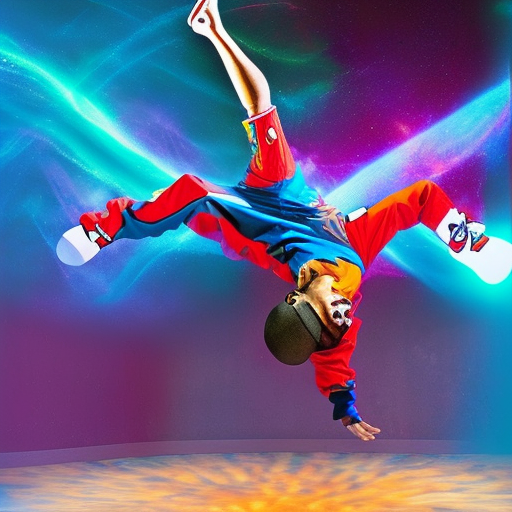B-boy: Exploring the World of Breakdancing
Breakdancing, also known as b-boying or breaking, is a dynamic and acrobatic style of street dance that originated in the Bronx, New York City, during the 1970s. B-boys, or breakboys, are the dancers who practice and perform breakdancing. This art form combines elements of athleticism, creativity, and musicality, making it a visually captivating and culturally significant movement.
History and Origins
Breakdancing emerged as a response to the social and economic challenges faced by African American and Latino communities in the Bronx. It was born out of a fusion of various dance styles, including African, Latin, and funk dances. B-boying was heavily influenced by the music of the time, particularly funk, soul, and early hip-hop.
The term “b-boy” is believed to have originated from the phrase “break boys,” which referred to the dancers who performed during the breaks of songs at block parties and other social gatherings. These dancers would showcase their skills in battles, where they would compete against each other to impress the crowd with their moves and style.
Elements and Techniques
B-boying is characterized by its four main elements: toprock, downrock, power moves, and freezes. Toprock refers to the footwork performed while standing upright, often used as an introduction or warm-up. Downrock, also known as footwork, involves intricate movements performed on the floor using the hands and feet. Power moves are acrobatic and athletic maneuvers that require strength, agility, and control. Freezes are static poses held by the dancer, often in gravity-defying positions.
B-boys continuously innovate and develop new moves, pushing the boundaries of what is possible within the art form. Some iconic moves include the windmill, flare, headspin, and airflare. These moves require a combination of strength, flexibility, and coordination, and mastering them can take years of practice.
Community and Culture
The b-boy community is a tight-knit and supportive network of dancers who share a passion for breakdancing. B-boys often form crews, which are groups of dancers who train and perform together. Crews provide a sense of camaraderie and serve as a platform for collaboration and competition.
B-boying has its own unique culture and values. Respect, originality, and creativity are highly valued within the community. B-boys often engage in battles, where they compete against each other in a friendly and competitive manner. Battles are judged based on criteria such as musicality, technique, and style.
Influence and Global Reach
Over the years, breakdancing has gained international recognition and has become a part of mainstream culture. It has been featured in movies, music videos, and even the Olympic Games. Breakdancing competitions, known as battles, are held worldwide, bringing together dancers from different countries and cultures.
B-boying has also influenced other art forms, such as fashion, music, and visual arts. The distinctive style and energy of breakdancing have inspired countless artists and designers. Hip-hop music, with its strong connection to breakdancing, has become a global phenomenon, shaping popular culture around the world.
In 2024, breakdancing will make its debut as an official Olympic sport at the Paris Games. This recognition further solidifies breakdancing’s place as a respected and celebrated art form.
The Future of B-boying
As breakdancing continues to evolve, it remains a vibrant and dynamic art form. B-boys and b-girls (female breakdancers) are constantly pushing the boundaries of what is possible, exploring new moves, and creating innovative choreography. Breakdancing serves as a platform for self-expression and a means of connecting with others.
With its rich history, cultural significance, and global reach, breakdancing and the b-boy community continue to inspire and captivate audiences around the world. Whether it’s on the streets, in competitions, or on the big screen, b-boys and b-girls are leaving their mark on the world of dance and beyond.












